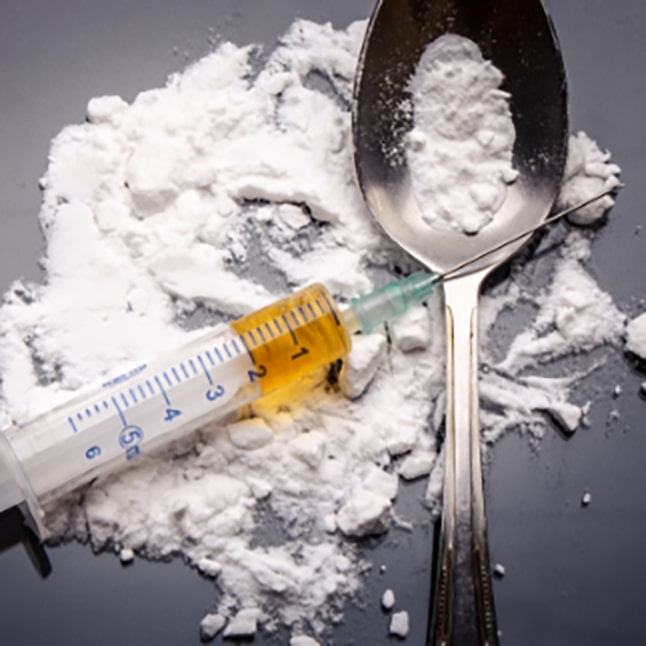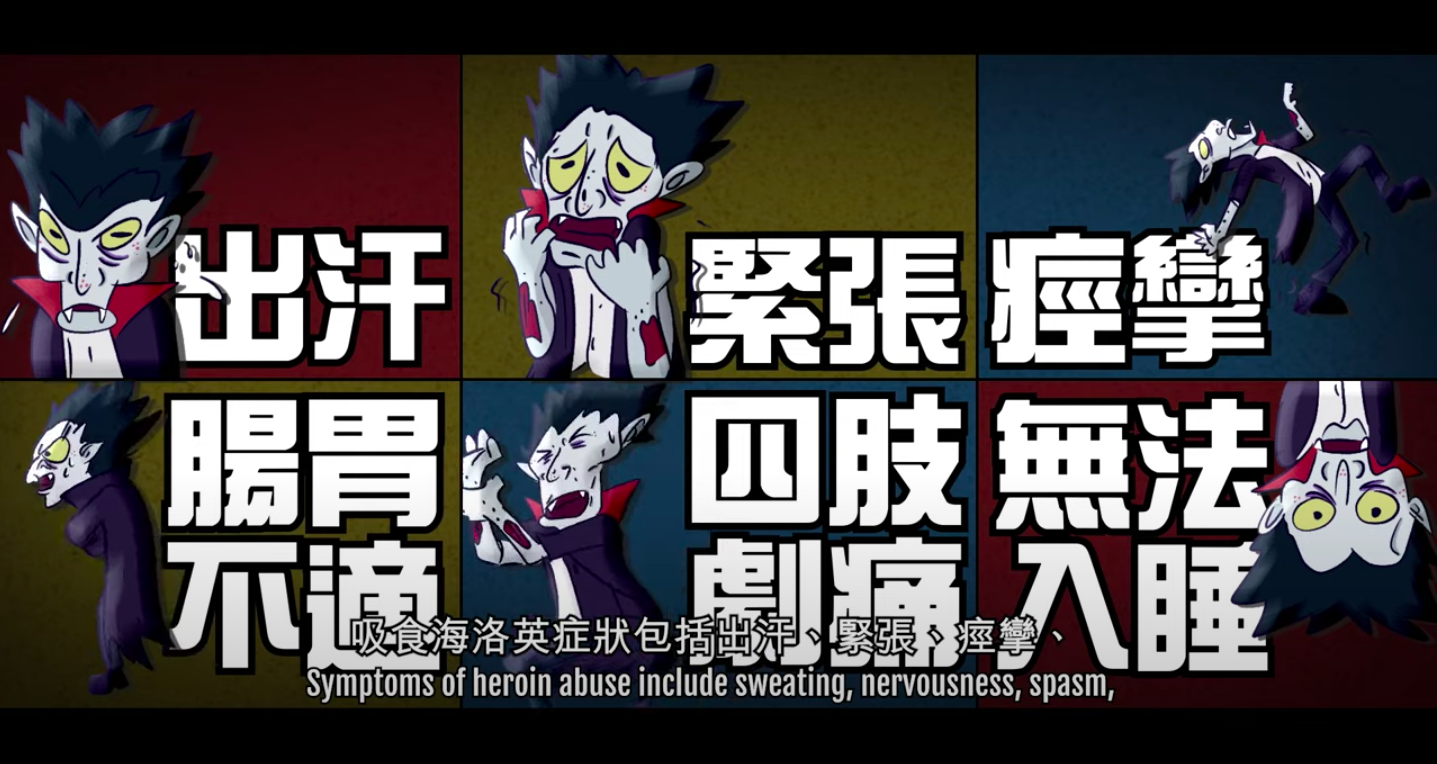Heroin
Heroin

- Opium, morphine and heroin are all derived from the opium poppy (Papaver somniferum) and are therefore often called opiates.
- Opiates belong to a group of drugs called narcotic analgesics.
- They slow down or depress the actions of the brain.
- Pure heroin is a white crystalline powder. Street varieties can be any colour from white to light grey with different purities. For the local illicit market it may be “cut” (diluted) with such materials as caffeine (a simulant), paracetamol (an analgesic/antipyretic), chlorpheniramine (an antihistamine), theophylline (a bronchodilator), antipyrine (an antipyretic), carbetapentane (an antitussive), phenobarbitone (a sedative), midazolam (a tranquilizer) and estazolam (a tranquilizer) in various combinations.
- Street Name:“White powder”, “Brown sugar”, “Smack”, “Horse”, “Harry” etc.
API & TV Programme
Adverse Effects of Heroin Use
Heroin acts as a powerful narcotic analgesic, relieves pain and has a sedative effect. At times it gives a feeling of happiness and well-being. Heroin, after injection, rapidly reaches the brain, thus giving an immediate effect. Because of its pain relief and “happiness” effect, heroin is one of the most addictive drugs of the narcotic/analgesic type. If the body is not supplied with the drug, withdrawal symptoms occur within 8 to 12 hours of the last dose. These take the form of sweating, nervousness, inability to sleep, stomach and intestinal problems, plus severe pains and spasms in the limbs. Tolerance develops rapidly, and increasingly high doses are required to produce the same effects. A point is reached when no amount of extra drug will produce the desired effect. At this point the user carries on taking heroin solely to prevent withdrawal symptoms.
Other adverse effects include:
- Unstable moods
- Reduced sexual drive
- Constipation
- Menstrual problems
- Breathing problems
Overdose of heroin can produce:
- Deep sleep which may lead to coma
- Low blood pressure
- Slow irregular heart rate
- Lack of oxygen in the blood
- Slow and shallow breathing
- Cold and clammy skin
- Death
Injecting oneself calls for high level of personal hygiene. Failure to maintain this may result in serious infections such as hepatitis B and acquired immune deficiency syndrome (AIDS). Furthermore, less soluble impurities such as caffeine may clot the blood vessels around the injection site, causing death of the neighbouring tissues.
- Heroin is a dangerous drug controlled under the Dangerous Drugs Ordinance.
- It is an offence to illegally produce, possess or supply heroin.
